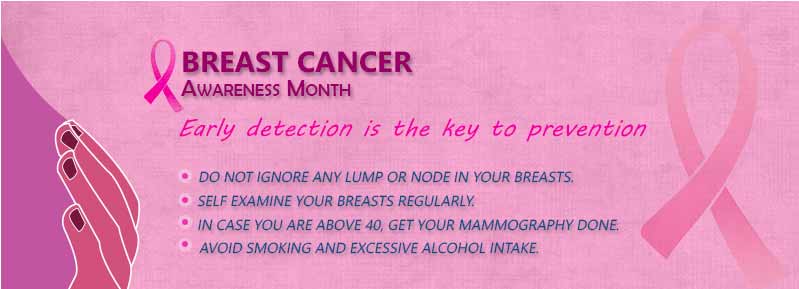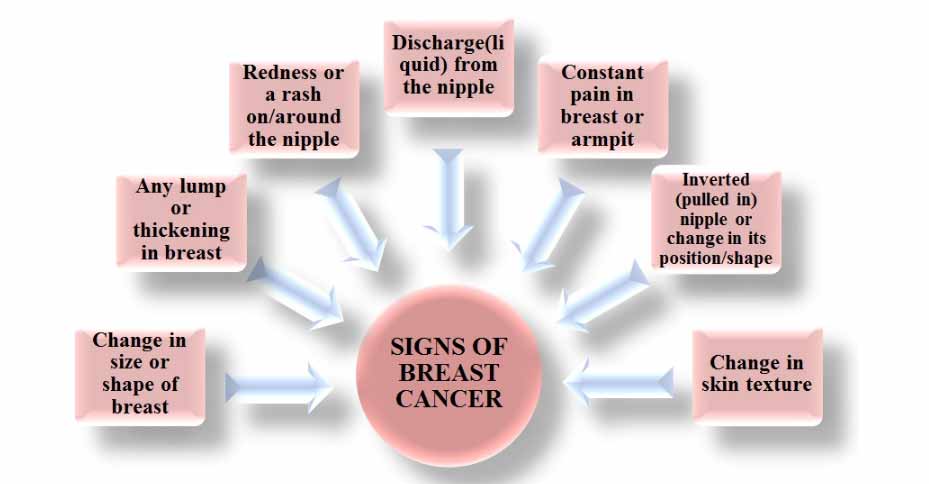Breast cancer is the most common type of cancer among Indian women. According to a report, India witnessed 1,62,468 new cases of breast cancer in 2018. Shockingly, it claimed 87,090 lives in the same period.
According to the World Health Organisation (WHO), there are around 1.38 million new cases of breast cancer every year and 4,58,000 people die every year. To raise awareness, October is observed as breast cancer awareness month.
This is an annual campaign during which different activities are conducted to educate people about this type of cancer. The aim of the campaign is to raise awareness about the need of its early detection and methods to prevent it.
Breast cancer can occur at any age but most of the cases are reported in women above the age of 40 years. In India, Breast Cancer accounts for 25 per cent to 31 per cent of all cancers in women.
According to the National Health Portal (NHP) of India, the average age of developing breast cancer has also undergone a significant shift from 50 – 70 years to 30 – 50 years.
 As the Breast Cancer Awareness Month has started, HealthWire spoke to Dr Manisha Singh – Founder & Mentor, Aatmaja Cancer Care And Support Center & Fellow Palliative Care, Gujarat Cancer Research Institute, Ahmedabad – to tell you everything about the breast cancer.
As the Breast Cancer Awareness Month has started, HealthWire spoke to Dr Manisha Singh – Founder & Mentor, Aatmaja Cancer Care And Support Center & Fellow Palliative Care, Gujarat Cancer Research Institute, Ahmedabad – to tell you everything about the breast cancer.
What Is Breast Cancer?
Breast cancer is cancer that develops in breast cells. According to Dr Manisha Singh, typically, the cancer forms in either the lobules or the ducts of the breast. “Lobules are the glands that produce milk, and ducts are the pathways that bring the milk from the glands to the nipple. Cancer can also occur in the fatty tissue or the fibrous connective tissue within your breast,” Dr Singh said.
ALSO READ | Late Conception Linked To Risk Of Breast Cancer
“The uncontrolled cancer cells often invade other healthy breast tissue and can travel to the lymph nodes under the arms. The lymph nodes are primary pathways that help the cancer cells move to other parts of the body,” she added.
Each type of breast cancer can cause a variety of symptoms. Dr Manisha Singh said that many of these symptoms are similar, but some can be different.
Symptoms For The Most Common Breast Cancers Include
- A breast lump or tissue thickening
- Breast pain
- Red, pitted skin over your entire breast
- Swelling in all or part of your breast
- A nipple discharge other than breast milk
- Bloody discharge from your nipple
- Peeling, flaking, scaling or of skin on your nipple or breast
- A sudden, unexplained change in the shape or size of your breast
- Sunken or Inverted nipple
- Changes to the appearance of the skin on your breasts
- A lump or swelling under your arm
What Are The Causes Of Breast Cancer?
After puberty, a woman’s breast consists of fat, connective tissue, and thousands of lobules, the doctor said.

“These are tiny glands that produce milk for breastfeeding. Tiny tubes, or ducts, carry the milk toward the nipple. Cancer causes the cells to multiply uncontrollably. They do not die at the usual point in their life cycle. This excessive cell growth causes cancer because the tumor uses nutrients and energy and deprives the cells around it. Breast cancer usually starts in the inner lining of milk ducts or the lobules that supply them with milk. From there, it can spread to other parts of the body,” she added.
Who Are At More Risk
- Women above the age of 55
- Consume excessive alcohol
- Early menstruation or late menopause
- Giving birth at an older age
- Women who choose hormone therapy
ALSO READ | A Genetic Tool Developed To Help Assess Breast Cancer Risk In European Women Also Works In Asian Women: Study
How It Can Be Prevented And What Care A Breast Cancer Patient Should Take
There is no way to prevent breast cancer as there are risk factors you can’t control. So following a healthy lifestyle, getting regular screenings, and taking any preventive measures your doctor recommends can help reduce your risk of developing breast cancer. Moreover, certain lifestyle decisions can significantly reduce the risk of breast cancer.

These include:
- Avoiding excessive alcohol consumption
- Following a healthful diet containing plenty of fresh fruit and vegetables
- Getting enough exercise
- Maintaining a healthy body mass index (BMI)
Busting Some Myths About Breast Cancer
A lump in breast means you have breast cancer: Only a small percentage of lumps are cancerous. But is always advisable to consult a doctor is there is a persistent lump or any change in the breast tissue.
Family history of breast cancer makes you more prone: According to NHP, only 10 per cent of people having this disease have a family history.
Breast cancer is contagious: It can neither be transferred no can be caught from someone. The disease is non-communicable and is the result of uncontrolled cell growth of the breast tissue.











